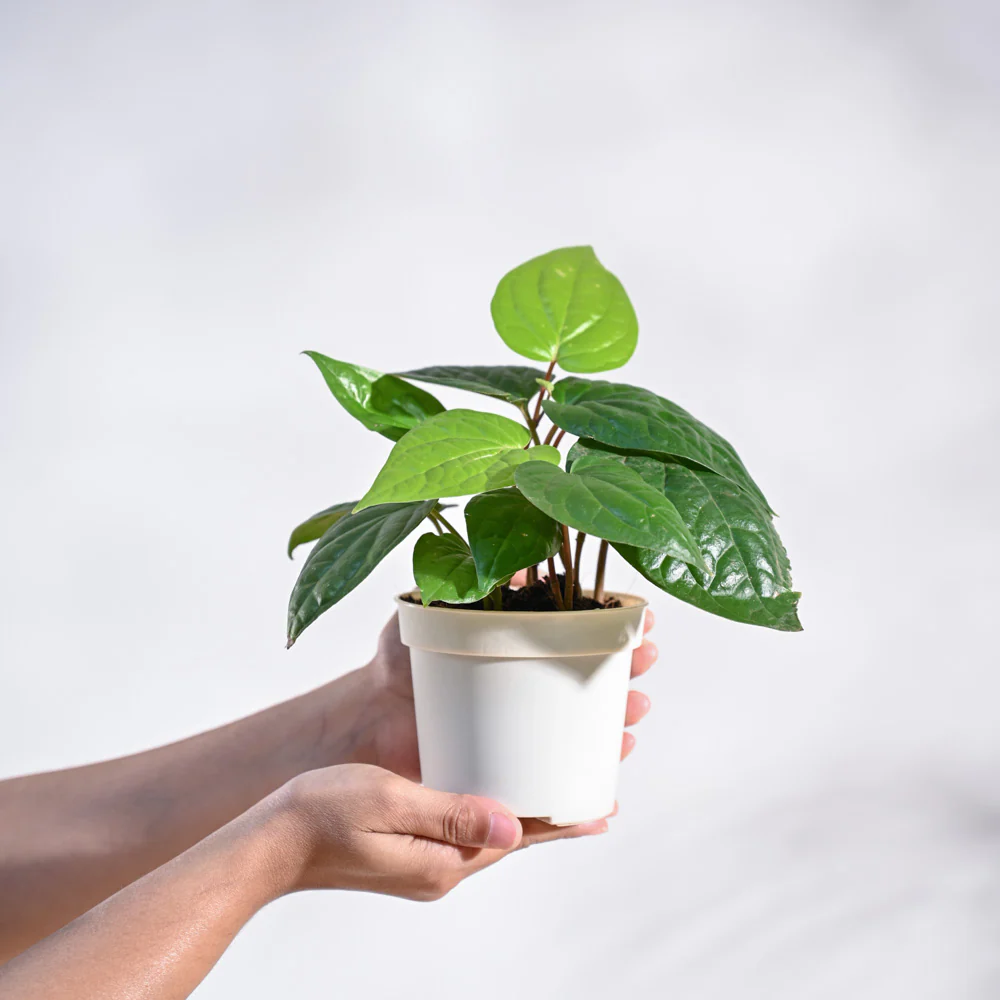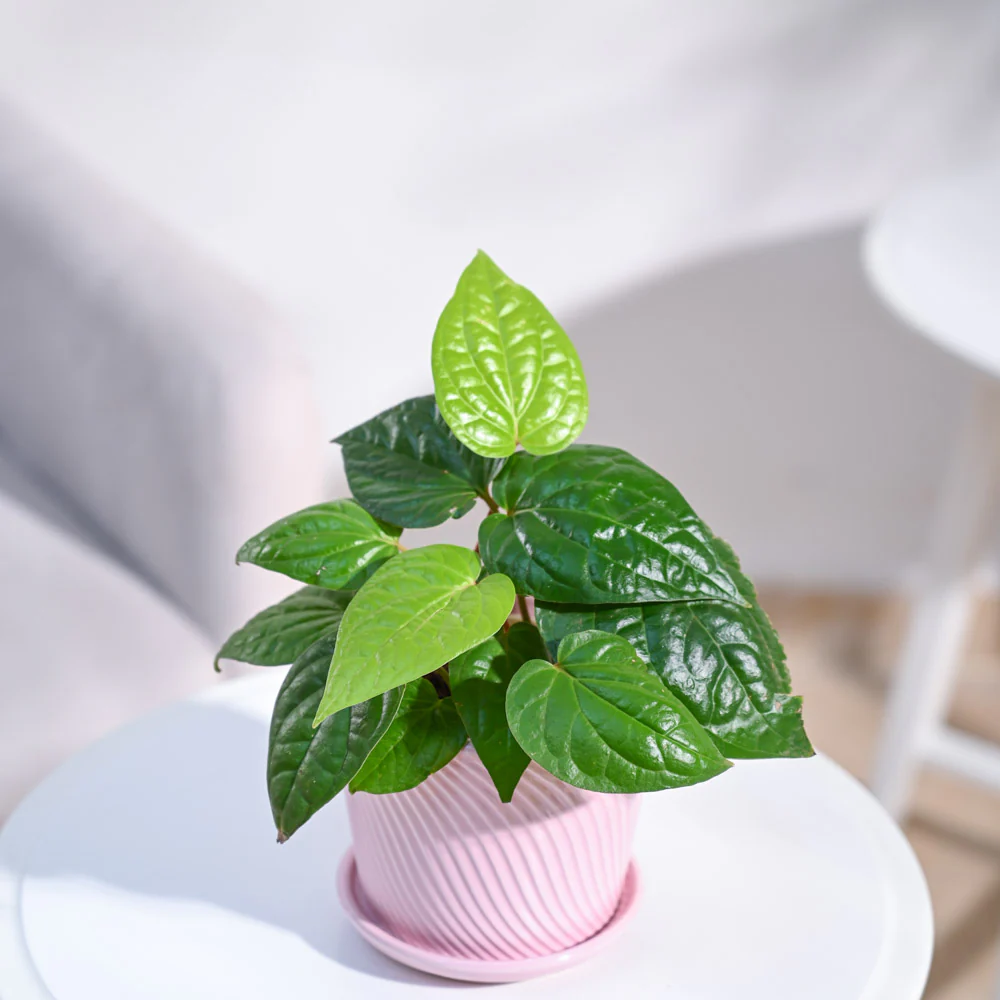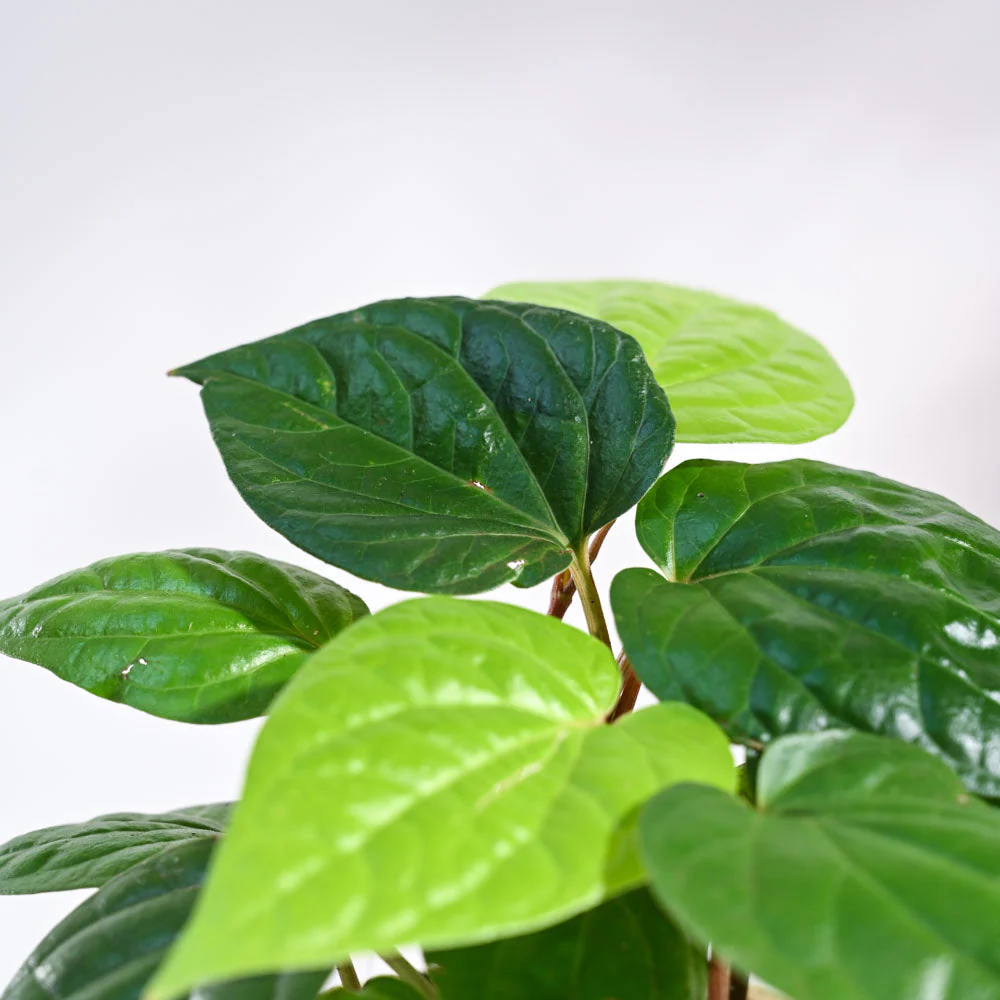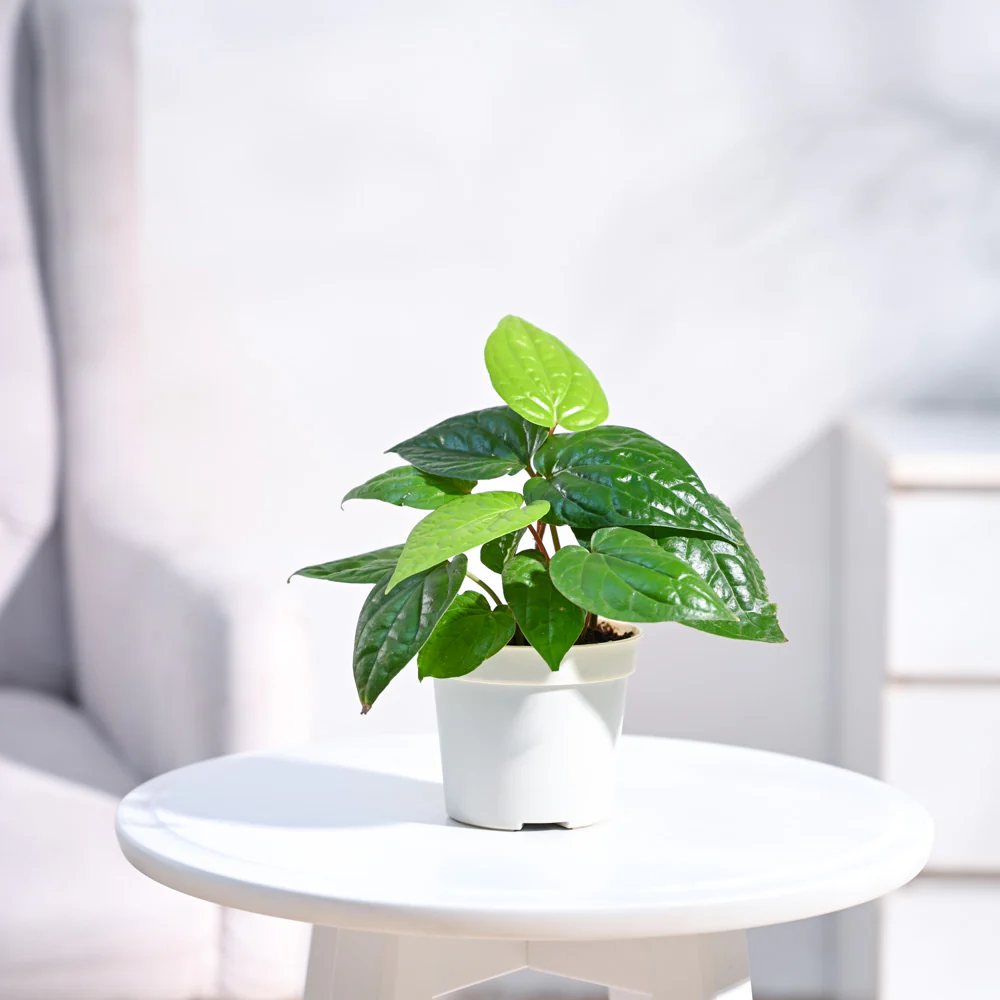The Peace Lily is a popular indoor plant known for its dark green leaves and elegant white flowers. Native to tropical regions, it’s cherished for its beauty, air-purifying qualities, and low-maintenance care.
The Betel Leaf or Magai Paan is a creeper with glossy heart-shaped leaves that are popularly consumed in India. It is fairly easy to grow even for new plant parents with little care. Let it climb or trail and it will be a great addition to both your collection and food habit as it is known to cool the body and provides many nutrients.





Subscribe our newsletter
© Copyright 2024 | PlantUncle By Eaglemedia360.com